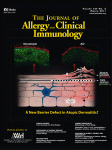
Celiac.com 03/21/2011 - Two recent population-based studies, both performed in Sweden by Dr. Jonas Ludvigsson, have concluded that people who have had biopsies that reveal villous atrophy are at increased risk of both ischemic heart disease and asthma. But at least regarding heart disease, the bulk of the risk may simply be attributable to inflammation.
The team of researchers looked at biopsy data collected from all twenty-eight of Sweden’s pathology departments between 2006 and 2008. The data included biopsies performed as far back as 1969, and represented 44,446 individuals: 28,190 with celiac disease, as ascertained by small intestine morphology; 12,598 with duodenal/jejuna inflammation lacking villous atrophy; and 3,658 with latent celiac disease, defined as those with positive celiac serology but normal mucosa. 219,392 healthy controls who had never had biopsies were included as controls. They concluded that celiac disease and inflammation of the small intestine were both modestly associated with ischemic heart disease, whereas latent celiac disease was not.
Celiac.com Sponsor (A12):
Although these findings agree in kind, if not in degree, with reports previously published by others, this study had a number of flaws. First of all, the researchers lack data on individual adherence to a gluten free diet. The authors note that “low dietary adherence is associated with persistent inflammation and therefore might explain the increased risk of ischemic heart disease observed in patients with celiac disease.” They also lack data on blood pressure, smoking status, body mass index, lipid levels, exercise routines, and other established risk factors for ischemic heart disease. Because they found the highest risk in the first year following biopsy, they cede that this risk could be attributable to enhanced inflammation, enhanced stress surrounding a diagnosis with celiac disease, or even an increase in reporting rather than incidence due to more vigilant medical care immediately following the diagnosis with celiac disease. They even note that gastrointestinal and cardiac symptoms are easily confused, further confounding their analysis.
The second study compared the same 28,190 Swedes with villous atrophy to 140,000 controls. It reported that people with celiac disease were 60% more likely to develop asthma than those without it, and conversely, that people with asthma are more likely to develop celiac disease. “A potential mechanism could be that asthma and celiac disease share some immunological feature,” said Dr. Ludvigsson. “If you have it, you are at increased risk of both diseases.” He also noted that vitamin D deficiency can play a causative role in both diseases, and should be assessed on both celiac patients and asthmatics.
Sources:
- Open Original Shared Link
- Open Original Shared Link









Recommended Comments
There are no comments to display.